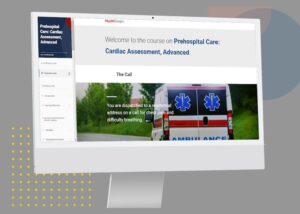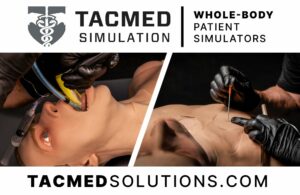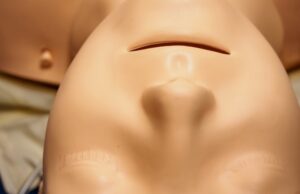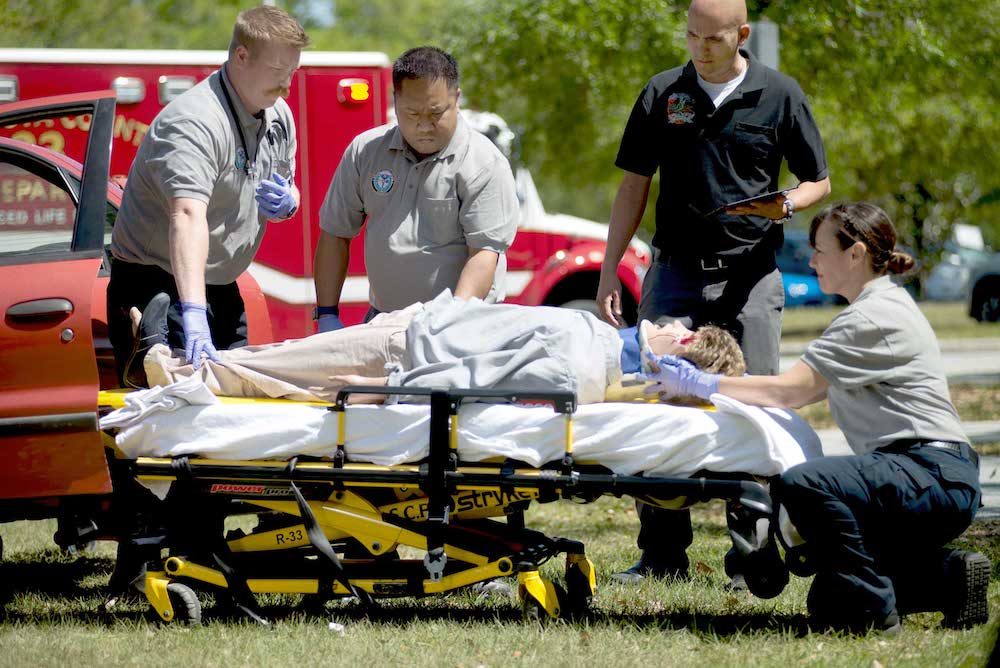Emergency Simulator
Designed to mimic real-life emergency situations, emergency simulators are computerized products designed to help first-responders learn how to react in extreme health scenarios. These products also help emergency personnel to develop an understanding of the core competencies involved in many procedures and treatments without risk. Whether they be EMS Management Simulators, Simulated Patient Monitors, or even realistic Patient Manikins, EMS Simulators are a crucial part of educating and training today’s EMS workforce.
Included in these core competencies are ways to care for patients, interact with both patients and their friends and family, work in teams and perform basic healthcare tasks (check blood pressure, respiratory rate, pupil reactivity, etc.). In addition to serving these purposes, emergency simulators also provide a means by which first-responders can learn how to operate and manipulate different tools and equipment all utilized under extreme health circumstances.
By presenting a learner with such a life-like human replica undergoing an emergency health situation, they are able to work their way through the clinical problem using logic reasoning, healthcare knowledge and without professional cues. This helps them to build their confidence in responding to emergencies, so that when one arises in the field they are able to act and perform the necessary duties with precision and confidence.
Sponsored Content:
Benefits of Emergency Simulation
While emergency simulators often come in the form of manikins, learners are also able to simulate emergency scenarios through paper-and-pencil problem-solving exercises. There are also computer screen-based cases that use software programs to test the knowledge and skills of healthcare professionals and learners alike. For example, computerized anesthesia simulators, ultrasound simulators and virtual reality-enhanced healthcare scenarios and environments are all different tools available for professional and educational use.
Whether by manikin or another form of simulation, breaking down such standardized scenarios enables learners to develop a mastery of the skills needed to accurately and efficiently perform each task. In the instance of error, instructors are then able to assess their performance step-by-step, providing a detailed explanation of how a mistake or error occurred. Through errors on life-like products, learners are able to develop an understanding of the severity of such a mistake, correcting the error before ever encountering a real-life patient.
Another benefit of simulated emergencies is often that learners and students can witness how other, more experienced healthcare professionals react in times when critical decisions are imperative. This includes learning and deciding when to perform certain procedures on patients who are unstable or unresponsiveness at the time of arrival and assessment. As patient conditions can vary grateful, and often become unpredictable, having learners experience a wide variety of simulated scenarios helps to best prepare a prospective responder for what may occur in the field.
Sponsored Content:
Seeing as there are an immeasurable number of potential emergency patient situations that can arise, timing and urgency becomes another important piece of the emergency scenario puzzle. Therefore, companies have sought to include a way to vary the level of urgency in their emergency simulation products. Ranging from immediate to limited, this provides learners with the opportunity to not only test their skills, but to test their skills within a given amount of time. This preparation process largely beneficial in the field, when they are then faced first-hand with needing to simply react, rather than to take the time to plan out a method of treatment.
High-Fidelity Simulator Utilization
A high-fidelity simulator is a computerized patient manikin with software that enables operators or programming to control the physiologic outcome of an emergency scenario. Able to mimic breathing rates, sounds, pulses, heart murmurs, pupillary findings and more, these simulators are designed to help learners practice procedures.
Such high-fidelity simulators are also intended for use with ventilators and are even capable of producing a carbon dioxide waveform. As the technology behind these manikins has developed, they are able to be used to practice tube thoracostomy, needle decompression, intubation, cricothyroidotomy, defibrillation and more. Their use extends to be able to recognize the detection of certain medications or drugs, and can track physiological responses to such substances.
Further revolutionizing simulation, especially in terms of emergencies, high-fidelity simulators can be programmed to speak on behalf of the patient as well. This is done through a speakerphone embedded in the manikin’s “head.”
The true benefit of this tool is that learners are able to determine for themselves what the patient’s history entails, and if this history should at all influence a treatment. The speaker can also be used to identify sounds of distress, such as moaning in the case of a critically ill patient. While many of these “voices” have mechanically quality, the technology contributes to the overall educational experience a learner is subjected to. Typically, manikins are not yet able to perform non-verbal cues.
Regardless, high-fidelity manikins are a form of the most useful tool for assessing emergency patient care, practice and communication. Not only do they help learners to understand the importance of making quick, accurate and logistical decisions, but they also help them to learn to manage patient care and to prioritize elements of treatment as needed.
Simulations using high-fidelity simulators are an ideal way to assess the performance of most of the physician tasks described, especially given an emergency stabilization. They provide clear-cut examples of therapeutic interventions, pharmacotherapy, observation and reassessment, and multitasking and team management on the most critically ill patients.
An example of how a high-fidelity emergency simulator can be used in practice can include a learner deciding how best to treat and manage a patient in anaphylactic shock. First, the treatment of a patient in anaphylactic shock requires recognition that the patient is in shock, knowledge about the condition and the required treatment. Then, the professional must exhibit a willingness to intervene and an understanding of any time constraints in place. Next, they must be able to administer the necessary life-saving intervention.
Then, as a real-life patient could develop hypotension and hypoxia, the learner should be faced with creating a sense of urgency. If there is further deterioration, the learner will be forced to administer epinephrine and intubate the patient. Upon using an emergency simulator to mirror this process, a later evaluation could include a global rating of performance, a critical action check-list, or a timed event such as time to intubation as documented by a supervising educator or professional. This system of checks will identify errors with the potential to gravely harm an actual patient later on.
For these reasons, emergency simulators can be seen as valuable educational tools across a variety of educational and training settings. Their use will likely expand and technology continues to bring forth new advancements to the existing technology.
Emergency Simulator Latest News

Using Casualty Simulation for Realistic First Aid Training

Avkin’s Avbirth Birthing Simulator Takes EMS Industry by Storm

Bridging the EMS System Trauma Simulation Gap with Culture Over Technology

Optimize Competency & Reduce Training Costs with HealthStream’s EMS Program

Elevate Your Simulated EMS Training with Tactical Medical Solutions

How to Make a Clinical Simulation ‘SALAD’ Simulator
Sponsored Content:














